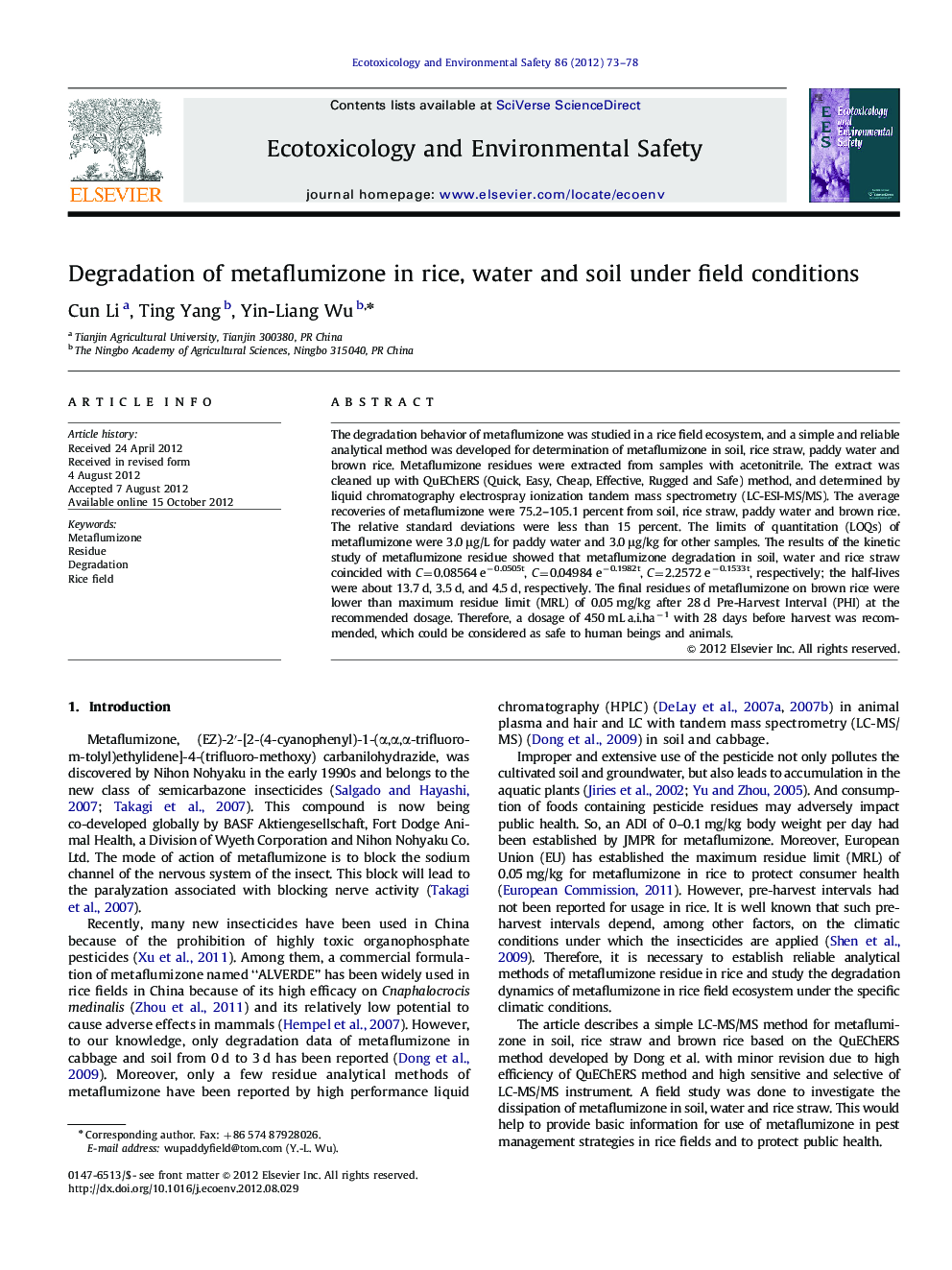| Article ID | Journal | Published Year | Pages | File Type |
|---|---|---|---|---|
| 4420546 | Ecotoxicology and Environmental Safety | 2012 | 6 Pages |
The degradation behavior of metaflumizone was studied in a rice field ecosystem, and a simple and reliable analytical method was developed for determination of metaflumizone in soil, rice straw, paddy water and brown rice. Metaflumizone residues were extracted from samples with acetonitrile. The extract was cleaned up with QuEChERS (Quick, Easy, Cheap, Effective, Rugged and Safe) method, and determined by liquid chromatography electrospray ionization tandem mass spectrometry (LC-ESI-MS/MS). The average recoveries of metaflumizone were 75.2–105.1 percent from soil, rice straw, paddy water and brown rice. The relative standard deviations were less than 15 percent. The limits of quantitation (LOQs) of metaflumizone were 3.0 μg/L for paddy water and 3.0 μg/kg for other samples. The results of the kinetic study of metaflumizone residue showed that metaflumizone degradation in soil, water and rice straw coincided with C=0.08564 e−0.0505t, C=0.04984 e−0.1982t, C=2.2572 e−0.1533t, respectively; the half-lives were about 13.7 d, 3.5 d, and 4.5 d, respectively. The final residues of metaflumizone on brown rice were lower than maximum residue limit (MRL) of 0.05 mg/kg after 28 d Pre-Harvest Interval (PHI) at the recommended dosage. Therefore, a dosage of 450 mL a.i.ha−1 with 28 days before harvest was recommended, which could be considered as safe to human beings and animals.
► A LC-MS-MS method has developed to determine metaflumizone residues. ► Water, soil, rice samples were successfully analyzed using the developed method. ► The half-lives of metaflumizone in soil, rice straw and water have been investigated. ► The pre-harvest interval (PHI) of metaflumizone in rice has been proposed.
